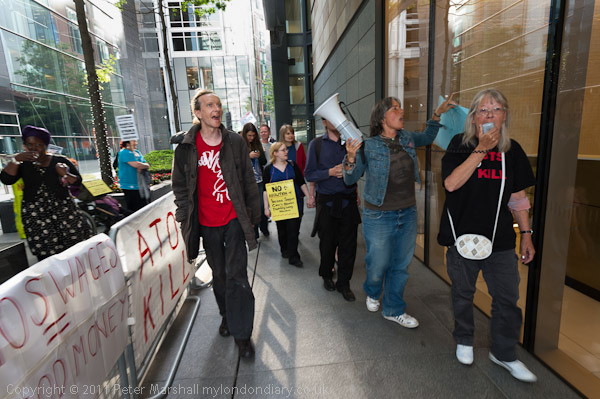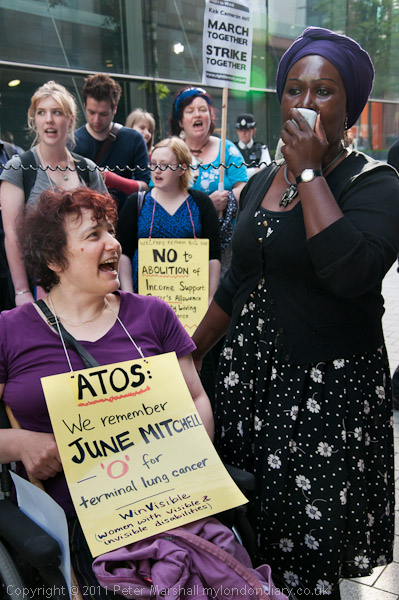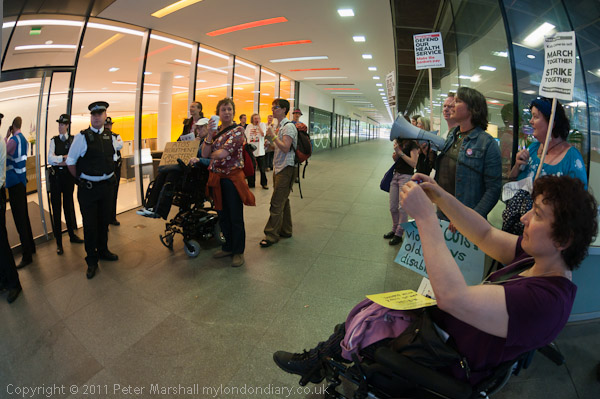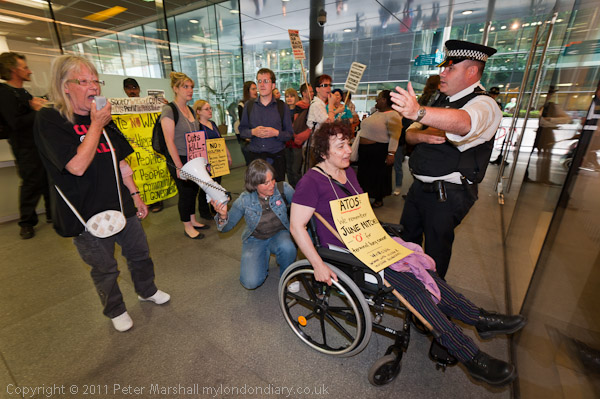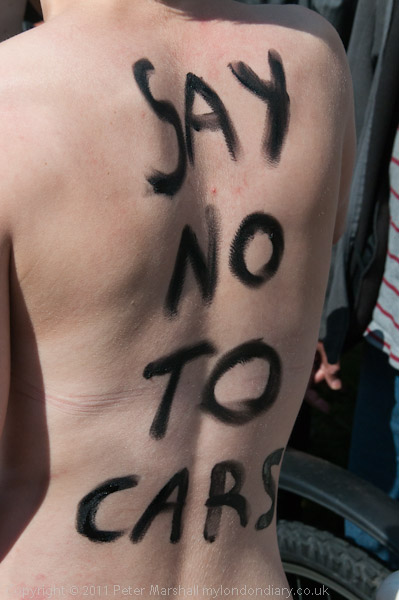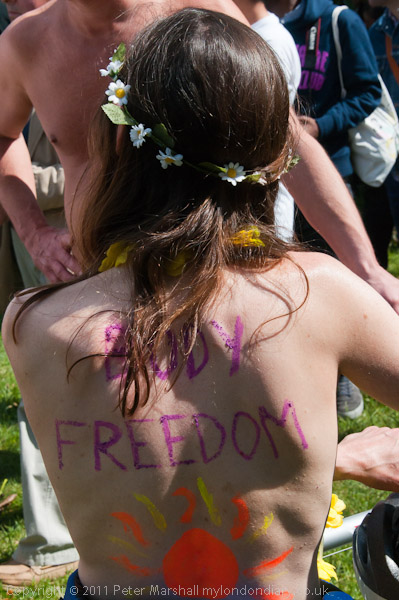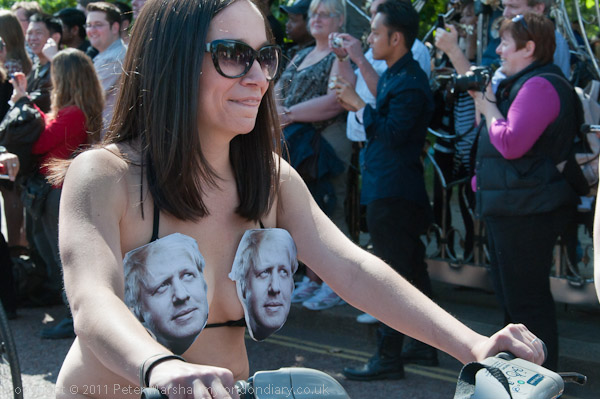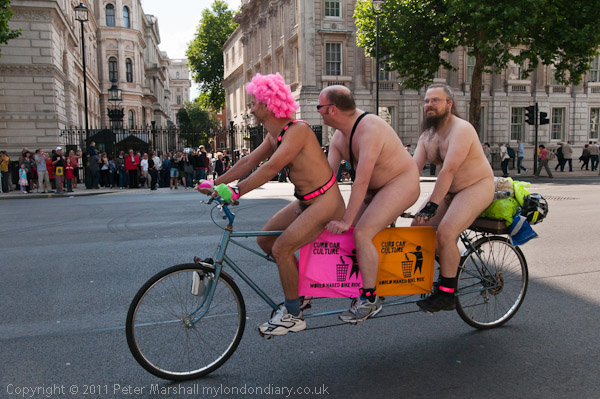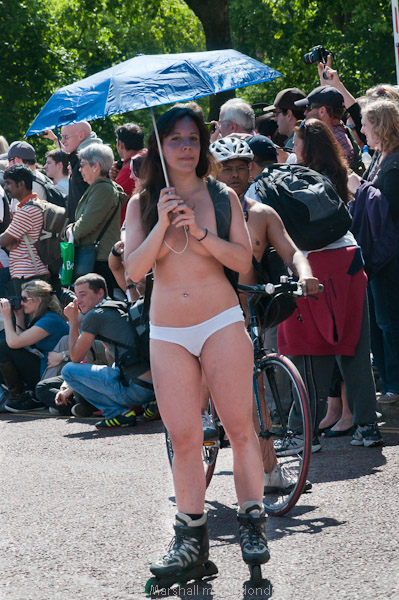By the start of 2008, photographers who covered protests on the street were getting pretty fed up of being harassed by police photographers. On one occasion I’d found myself covering an event in Parliament Square with a police photographer around 10 feet away photographing me time after time for around 5 minutes as I kept my camera to my face, waiting for me to lower it. On an earlier occasion I’d been engaged in conversation by an officer only to look up after a minute or so to find myself staring into the large lens of another member of the same FIT team around 5 feet away.
There were other little tensions too – the officers who would look at my press card and say flatly “That’s not a real press card” or others who would simply say “I don’t care if you’re the effing press” or words to that effect. The odd stop and search. Various threats of arrest unless I got off the road – or once if I continued to stand on a wide empty pavement, forcing me to stand in a road with fast-moving traffic.
In fact I got treated better than most, if only because I usually decided life was too short to argue and the best response was often just to walk a few yards away and get on with my job. And for the sake of balance there were plenty of occasions too when police helped me, gave me good advice and occasionally protected me from harm. One officer came up to talk to me at a demonstration and as we chatted told me that he had been given a firm telling off for talking to me at an earlier event. Others would come up and ask me questions that let me know that they were keeping an eye on me – and in some cases reading this blog.
Around Christmas 2007, a series of posters started to appear outside police stations aimed at getting people to report suspicious activities, and one of these included a camera. Then we got one all to ourselves, with the caption ‘Thousands of people take photos every day. What if one of them seems odd?’ and it was a kind of last straw.
On March 28, 2008, along with 20 or so other photographers, mainly NUJ members, I was outside New Scotland Yard to photograph NUJ general secretary Jeremy Dear in a one-person protest for press freedom which centred around this campaign.

You can read about that event and see more pictures in my post here, Photographers by the Yard. The protest was followed up by a letter from the NUJ to the Home Secretary calling on the government to “stamp out the routine and deliberate targeting of photographers and other journalists by the Forward Intelligence Team ” and at the TUC Congress in September 2008, the NUJ showed a short film by Jason N Parkinson with evidence of police targeting and obstruction.
I’d first met Jason a couple of years earlier outside Harmondsworth Detention centre, when I was standing on a grass bank photographing a group of demonstrators who had been surrounded by police – the term kettled had yet to enter our vocabulary. He was showing them his press card and they were refusing to recognise it as a real press card.
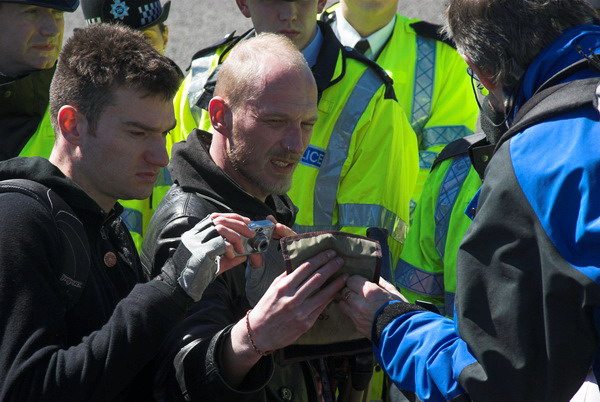
Jason called up to the three of us who were standing on the bank and asked if we could come and show a press card to confirm his was the real thing. I’d walked past the police earlier carefully holding my thumb over the date on mine – it had run out 8 days earlier and I hadn’t noticed until too late to ask for a replacement, so I didn’t volunteer, but fortunately one of the other photographers did.
Other events followed, both through the union and through other organisations, and in February 2009 there was another protest, a flashmob called by the NUJ and backed by the BPPA and the BJP, and given publicity in Amateur Photographer and on Facebook and elsewhere on the web – including here. Around 400 photographers turned up to make their protest.
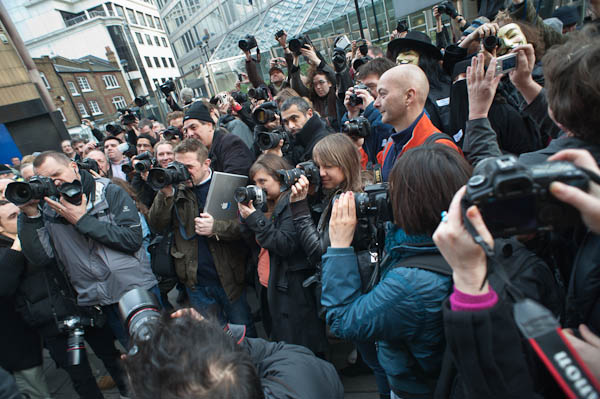
You can read my report and see more pictures at Media Protest at Terror Law on My London Diary.
Our protests were beginning to have some effect, and by July 2009 police were certainly being more careful about photographing the press. Outside the French Embassy I confronted a FIT officer who had pointed his camera with a very long lens straight at me from around 20 metres and he squirmed and made excuses, saying he hadn’t been photographing me and wouldn’t dream of photographing the press. Though of course he had.
But there were still too many instances of harassment of photographers, and a group of them, mainly NUJ members, decided to set up the organisation ‘I’m a Photographer Not a Terrorist’ which had its launch party – one of the few events I didn’t get to as I was in Glasgow , but 300 others made it – at the late-lamented Foundry pub in Shoreditch
You can find more on the Phnat web site where you can download the pamphlet with a history of the campaign to date. It was actually launched earlier in Manchester, but we re-floated it on a plentiful supply of wine at the AoP gallery just a short walk from the former Foundry.
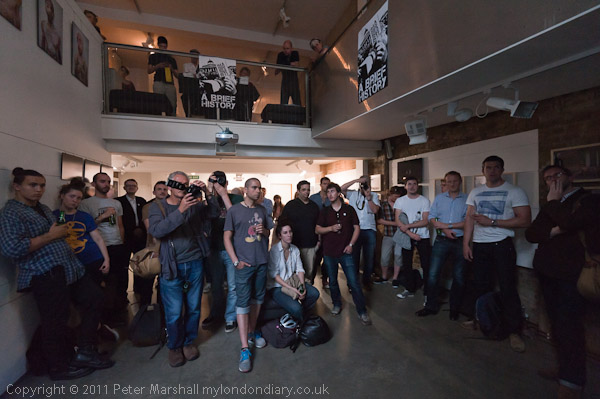
More on the ‘launch’ and a few more pictures at Not A Terrorist History Launch on My London Diary.
